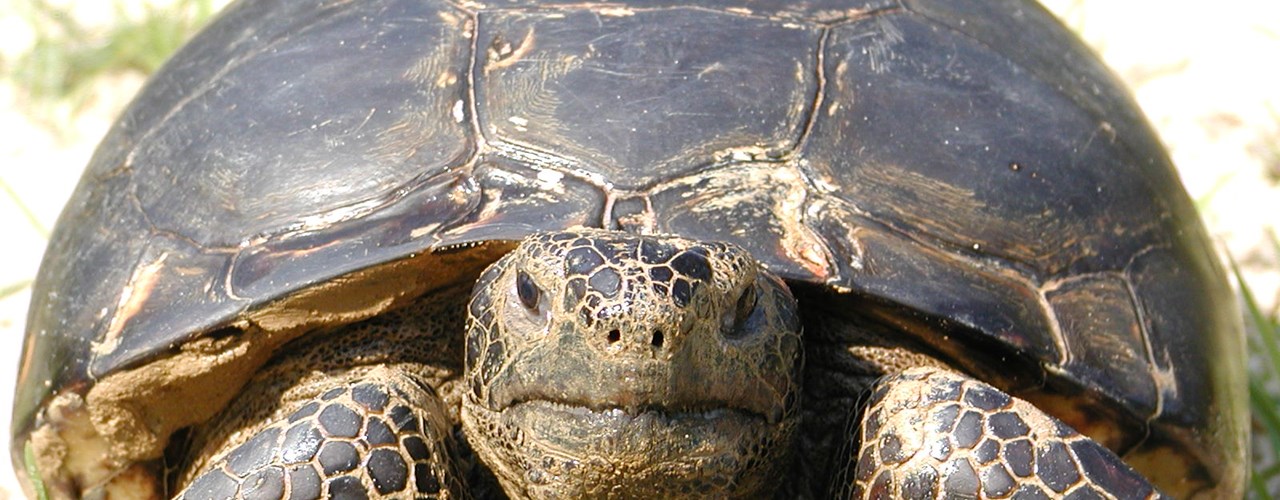Protecting military readiness and the gopher tortoise at the same time
A first-in-the-nation conservation plan, crafted by the U.S. Department of Defense, U.S. Fish and Wildlife Service (USFWS) and wildlife agencies in Alabama, Florida, Georgia and South Carolina, protects at-risk gopher tortoises while helping military bases to continue training and testing missions across the tortoise’s Southern turf.
The Gopher Tortoise Conservation and Crediting Strategy — think of a savings account where the military can make deposits now (tortoise credits) that will be available for future use — was recently officially unveiled at a ceremony in Tifton, Georgia, near the Alapaha River Wildlife Management Area (WMA), Georgia’s newest WMA.
Alapaha has one of the Georgia’s greatest concentrations of gopher tortoises, with about 2,000 roaming the 6,800-acre conservation area, according to USFWS. The tortoise is a keystone species with an estimated 300 other species — snakes, spiders, lizards and frogs — dependent upon its burrows for protection.
According to USFWS, the goal is to keep the tortoise from being listed under the Endangered Species Act (ESA), a designation that could complicate the military’s training or bombing exercises. This strategy encourages conservation investments first that will help keep the tortoise not listed. If it is listed in the future, the credit strategy will allow the military to continue its mission without new conservation requirements because of those early deposits it already invested in voluntary conservation efforts.
Any of the 22 Army, Navy, Marine Corps, Air Force or National Guard bases within the tortoise’s Southern range are eligible to participate in the credit program at Alapaha, according to USFWS.
“It’s a unique approach to help the military balance mission activities with conservation responsibilities,” said Maureen Sullivan, deputy assistant secretary of defense for environment, safety and occupational health. “We hope this innovative approach can serve as a model for similar initiatives for other species and in other regions of the country.”
Conserving key habitats and populations is critical to the rangewide tortoise strategy, according to USFWS. The Alapaha WMA, financed by the Department of Defense, U.S. Forest Service, Georgia DNR, USFWS and the Knobloch Family Foundation, underscores the need for partnerships to achieve conservation goals.
Continue reading the USFWS article for more information about conservation of the gopher tortoise and its habitat.
The Texas A&M Natural Resources Institute supports this work through its ESA policy expertise, as well as administrative and project management support.



